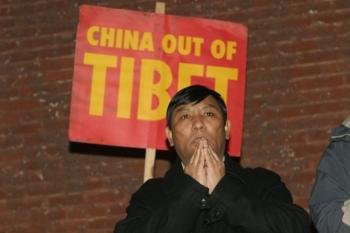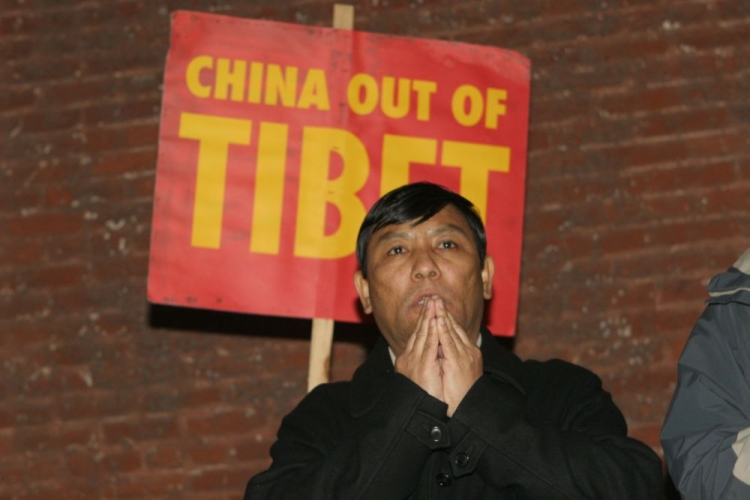CHICAGO—Approximately one hundred members of the Chicago Tibetan community held a candlelight vigil in front of the Chinese Consulate this evening in support of protesters in Tibet who were met with Chinese police brutality earlier today.
The protest in Tibet, initiated by monks, was part of the annual demonstration in remembrance of the 1959 uprising against Chinese communist rule. But this year, in light of the upcoming Beijing Olympics, many Tibetans took efforts a step further.
“This is the time for us,” said Kecsang Draggo, a former head of the Tibetan Alliance of Chicago. “People [in Tibet] never get the chance to demonstrate. Just by shouting ”Tibet“ you are arrested. We don’t know how we will protest [otherwise].”
Protesters lined up across the street from the Chicago Chinese Consulate and launched cries of “China lies, people die” and “free Tibet” in English and Chinese, followed by a song of prayer in Tibetan. The event ended with a speech from Tenzin Youdon, head of the Chicago chapter of Students for Free Tibet (SFT), an international student organization in favor of total independence.
In her speech, Youdon called for support from the American people. “Of all the other nations, the U.S.—Americans—should know how it feels to be deprived of your own freedom,” she said. “People move here from all over the world to get that freedom.”
Youdon rushed to the event on short notice after formulating a unified message with other SFT chapters. “We want to tell them ‘Don’t give up. We are here for you and you are not forgotten,’” Youdon said.
To the Chinese regime is another message. The group wants to “make sure that what they [the Chinese regime] do inside, everyone outside knows,” Draggo said. “Normally they think that if they just shut out Tibet, that no one will know the situation inside.”
With chants of “free Tibet,” it seems clear that those who showed up to the protest today are in favor of independence. However, the Dalai Lama has spoken out for a “middle way approach,” forgoing talk of independence for dialogue with the Chinese regime.
Draggo stands firm in his support for a free Tibet. The middle way approach “is the Dalai Lama’s position, but the Tibetan people are the people, not government,” he said. “Some may share the Dalai Lama’s views, some are for total independence.”
The latest reports from Amnesty International revealed that teargas and tanks were used against Tibetans since the March 10 demonstrations. At least 11 protesters, mostly monks, were beaten and detained on Monday, according to the Amnesty report. Current figures are as yet unknown.
Some Chicago protesters said they were at work when they heard of plans to meet at the Chinese consulate. Some said they had not gotten a chance to phone relatives in Tibet, and had heard that communication lines have been cut off. However, they remain hopeful that their message of solidarity will reach those in Tibet somehow, according to Youdon.







